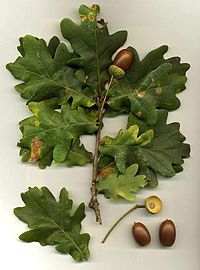
Photo from wikipedia
Biogeographical evidence, both, for and against the "regional endemism paradigm" hypothesis has been uncovered across the Greater Sunda Region (Sundaland) of Southeast Asia. Additionally, there are competing hypotheses regarding how… Click to show full abstract
Biogeographical evidence, both, for and against the "regional endemism paradigm" hypothesis has been uncovered across the Greater Sunda Region (Sundaland) of Southeast Asia. Additionally, there are competing hypotheses regarding how Pleistocene forests may have impacted biological patterns and processes in Sumatra. Using montane agamid lizards from Sumatra, we derived and analyzed a phylogenetic dataset, genetic divergence estimates, and contemporary distributional patterns among species. We tested whether (1) Sumatra's highland Draconinae diversification fits the regional endemism paradigm hypothesis and (2) Draconinae phylogeography provides biological evidence for Pleistocene forest extent at various points in history. Our results suggest in situ diversification was the main driver behind montane Draconinae lizard diversification in Sumatra, rejecting the "regional endemism paradigm". Contemporary distribution of endemic species and their genetic relationships may potentially provide biologicalevidence for determining more precise elevational lower limits of montane forests during the Pleistocene epoch. Our data suggests montane forests did not retreat more than 700 - 750 meters during glacial maxima because lower retreating forests would have become interconnected, allowing for widespread dispersal, exchange of gene flow and sympatric distributions contemporarily. To the contrary, our divergence estimates show that cloud forest dragons have been isolated for millions of years, suggesting there may have been a continuous disconnect between some areas, predating the Pleistocene. There may also be other ecological and evolutionary factors that impacted Draconinae distributions, such as competition, making this an excellent system for testing questions regarding montane biogeography. Additionally, we provide the first phylogeny for a wide range of Sundaland agamid species and identify some biogeographic pressures that may have triggered montane Draconinae diversification in Sumatra.
Journal Title: Molecular phylogenetics and evolution
Year Published: 2020
Link to full text (if available)
Share on Social Media: Sign Up to like & get
recommendations!